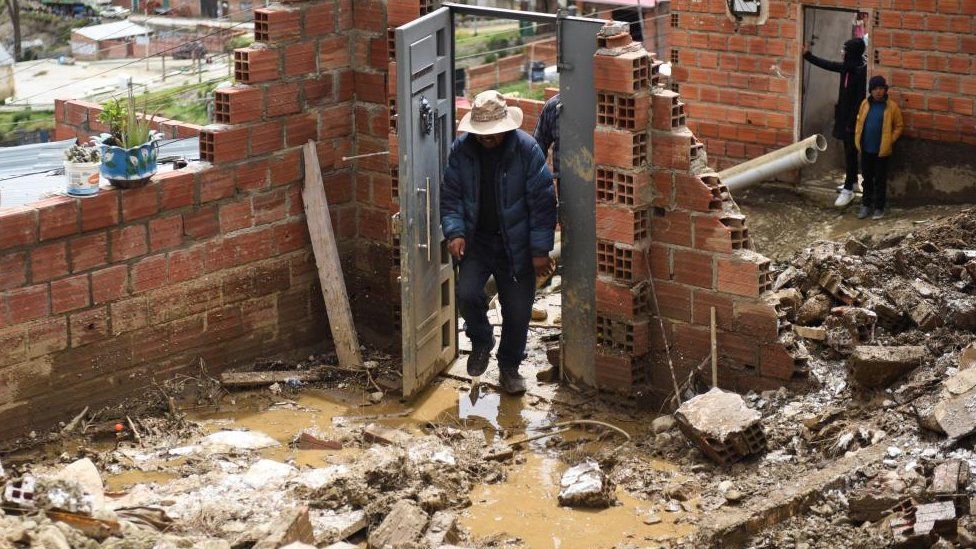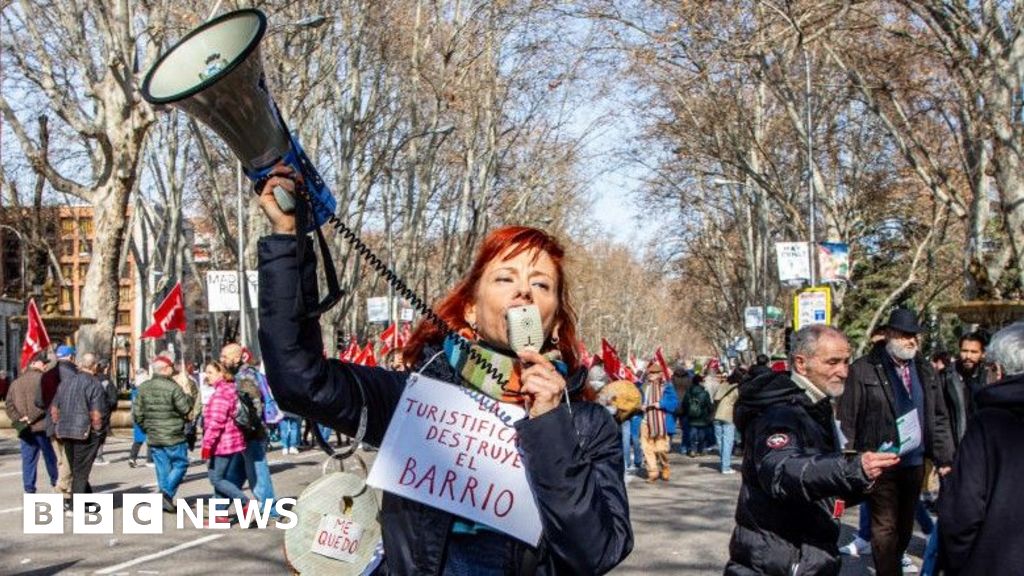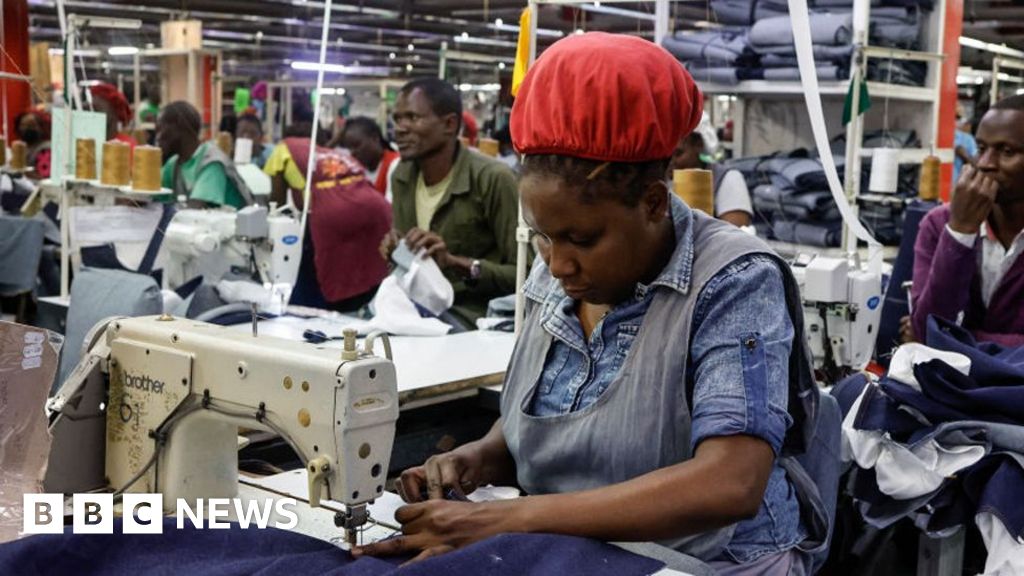ARTICLE AD BOX
 Image source, Reuters
Image source, Reuters
Some homes were buried by a landslide in Achocalla, while others had their roofs swept away
By Vanessa Buschschlüter
BBC News
Hundreds of towns and villages in Bolivia have been put under alert as torrential rains continue to wreak havoc in the South American country.
Officials say 33 people have died since November due to the rains, which have triggered landslides and caused rivers to burst their banks.
The death toll is eight times higher than in the same period last year.
Officials are carefully monitoring a number of dams which they fear could overflow.
Deputy Minister for Civil Defence, Juan Carlos Calvimontes, said out of Bolivia's 340 municipalities, 10 had been put on the highest alert, and another 279 were on orange alert - the second highest.
Officials also said that humanitarian aid had been sent to Achocalla, in La Paz province, where a 35-year-old woman and her two children were buried in a mudslide that engulfed their home.
A neighbour told local newspaper Correo del Sur that she had shouted at the woman to get out of the house, but that the mother had probably not managed to grab her children in time.
More than 20 people were also injured.
Also in La Paz province, the authorities are keeping a close eye on the water levels in the Incachaca dam.
Government experts together with the mayor of the city of La Paz, which is located downstream from the dam, inspected it on Sunday.
Mayor Iván Arias said that while the water level in the reservoir had "reached 100%", the water was currently draining well and he did not foresee "any major consequences downstream".
Three more reservoirs - Hampaturi Alto, Pampalarama and Alpaquita - are also at their maximum level.
The heavy rains have hit Bolivia after a prolonged drought and one of the hottest winters the country has experienced.
Back in October, hundreds of people had gathered at the Incachaca reservoir - which is now close to overflowing - to pray for rain.
Image source, Reuters
Image caption,In October, water levels at the Incachaca reservoir were low, but now the spill gates had to be opened
Extreme weather events are not uncommon in Bolivia, but a warming atmosphere caused by climate change has made extreme rainfall more likely.
The world has already warmed by about 1.1C since the industrial era began and temperatures will keep rising unless governments around the world make steep cuts to emissions.

 1 year ago
44
1 year ago
44








 English (US) ·
English (US) ·